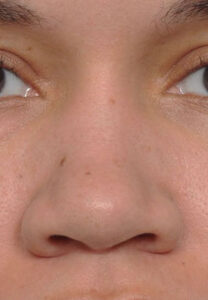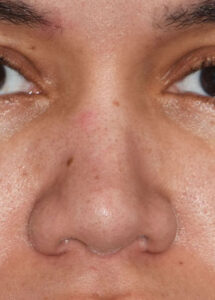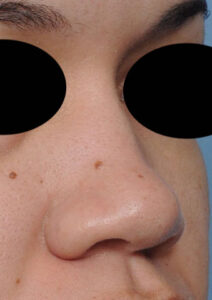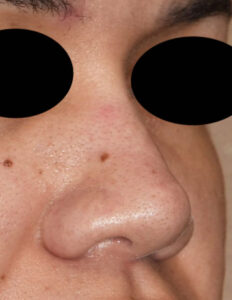Background: The shape of the African-American nose is typified by several common features. The nasal bridge is typically low, the nasal tip is wide and under projected and the nostrils are often flared or wide. These osteocartilaginous features combined with thick nasal skin create a nose that needs a combination of increased hard tissue support, cartilage rearrangement and soft tissue reduction.
The most compelling feature that drives many African-Americans to seek rhinoplasty surgery is the lower third of the nose, the tip and its associated wide nostrils. Due to soft albeit wide lower alar cartilage the tip often does not have adequate projection. This magnifies the frequently wide nostrils…as well as vice versa. (wide nostrils take the tip look shorter) Patients may prevent just for the reduction os the flared nostrils but it pays also evaluate that effect with computer imaging before surgery.
Very often reduction of the flared nostrils requires efforts at tip narrowing/increased projection to look proportionate. When doing such tip narrowing simply trying to narrow the lower alar cartilages alone is often not as effective as one would think.These cartilages are weak and trimming and suturing them together with thick overlying skin often does not create the thinner nasal tip the patient desires. To be more effective adding a central strut for support is what is needed as driving tip projection upward gives the lower alar cartilages something to grab onto to hold them centrally and to prevent them to ultimately collapse back outward. Thick skin often requires an ‘overcorrected effect’ to show much external change.
Case Study: This female desired nostril width reduction as well as tip narrowing. She was also bothered by the dip behind the tip of her nose. She did not mind the level of her nasal bridge above the dip but just the supra tip dip.
Under general anesthesia and through an open rhinoplasty septal grafts were initially harvested. They were used as a columellar strut as well as a two layer only in the supra tip area. These graft were placed after the lower alar cartilages had a cephalic trim and dime narrowing sutures. Lastly nostril narrowing was done by an internal wedge technique.
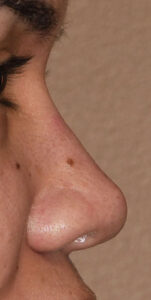
Case Highlights:
1) Rhinoplasty of the African-American nose often focuses in increased projection and decreasing the width of the nose.
2) A primary focus of width reduction of the African-American nose is that of nostril width…reduction of the wide flaring nostrils.
3) The wide flaring nostrils in the African-American Nose is frequently associated with a wide tip and flared lower alar cartilages.



